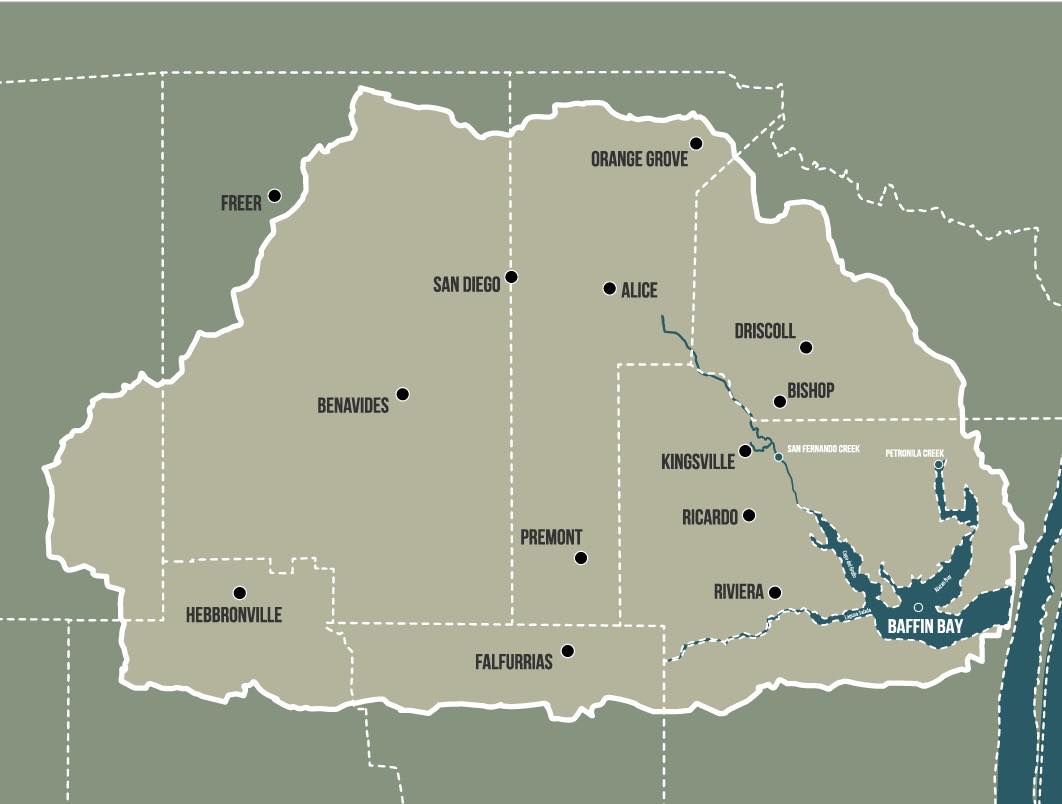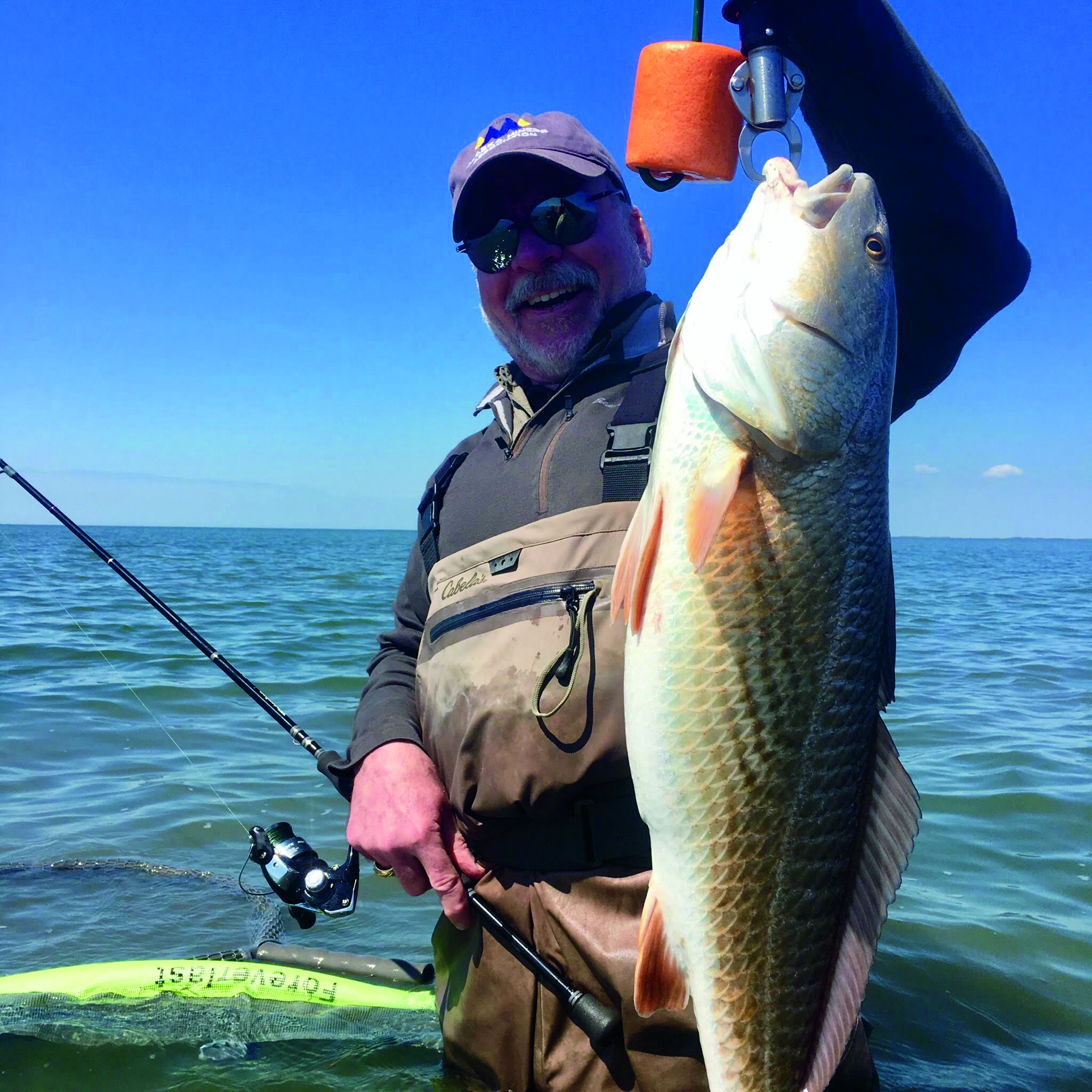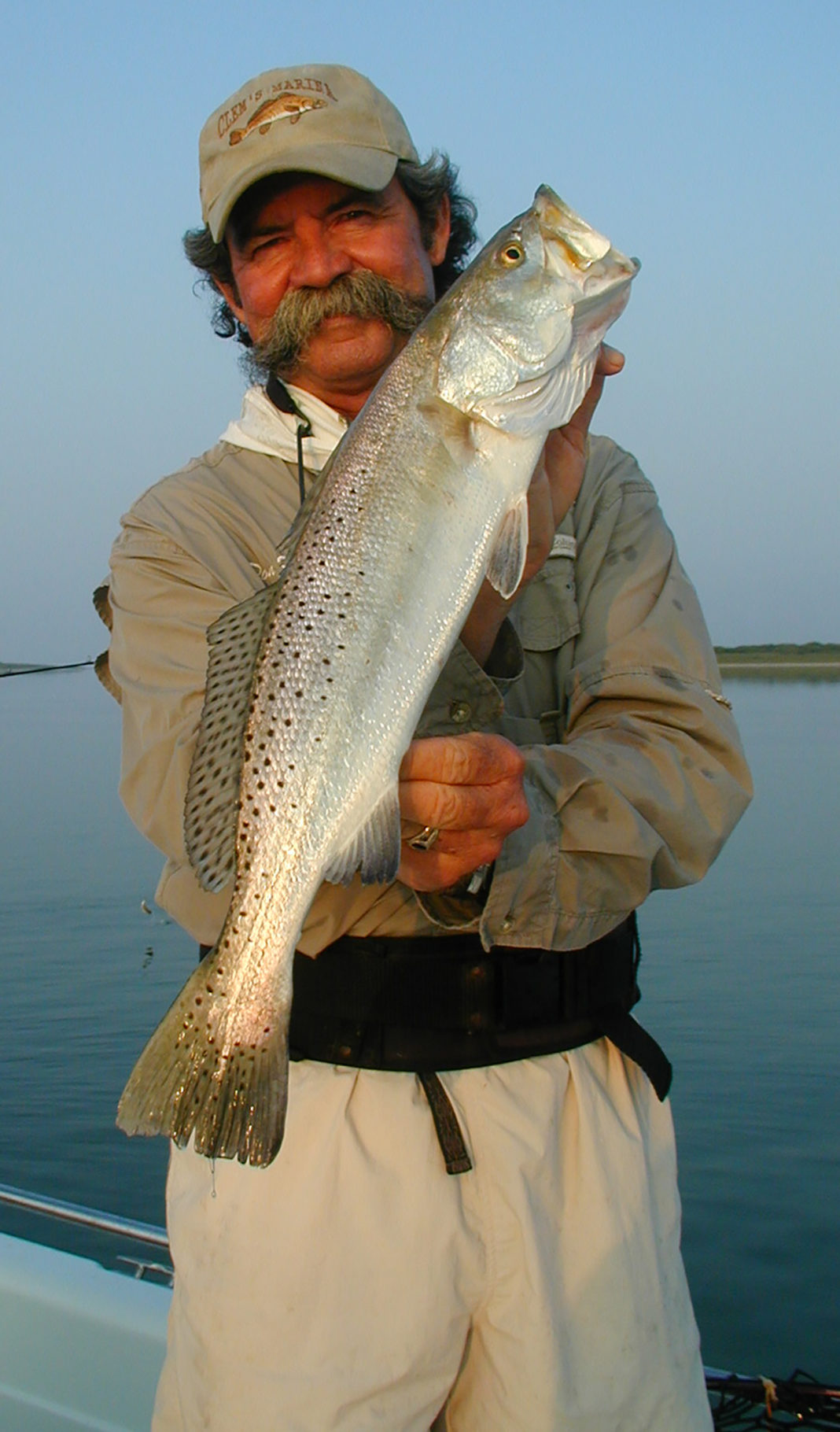Baffin Bay is unlike any other ecosystem in Texas.
The hypersaline bay in what once was considered the Wild Horse Desert on maps is famous for its “rocks” — ancient living structures constructed over thousands of years by tiny tube-building serpulid worms.
The bay system also is notable for the prime target of saltwater anglers across the Lone Star State: huge speckled trout, aka “gator” trout.
Jim Wallace landed the previous state record speck with a 13-pound, 11-ounce fish he caught in Baffin in 1996. That fish has only been eclipsed one time and the current state record was caught by Bud Rowland in the Lower Laguna Madre in 2002. That fish weighed a hefty 15.6 pounds!
However, in terms of quantity of quality, Baffin still stands atop the trophy trout game, with numerous guides focusing their everyday efforts for months on end in hopes of landing a true gator that eclipses 30 inches.
Baffin, which spans roughly 65,000 acres, also has three extended fingers or subsidiary bays. The largest, Alazan Bay, extends to the northeast from the main bay and is fed by Petronilla Creek. Cayo del Grullo to the northwest is fed by San Fernando Creek while the smallest finger, Laguna Salada, points westward and is fed by Los Olmos Creek. Overall, Baffin Bay’s watershed includes about 1.5 million acres.
In recent years, that watershed has brought about concerns from local communities and researchers regarding the overall water quality of the bay, notably from negative manmade interaction with the native habitat in the form of runoff pollution.
That has led to one overarching question: What does the future hold for Baffin Bay?

Bringing Baffin Back puts focus on water quality
Led by Dr. Michael Wetz, Harte Research Institute Chair for Coastal Ecosystem Processes, Bringing Baffin Back is focused on a multi-tiered approach tied to the historically excellent speckled trout fishery: finding solutions to water quality problems that are contributing to the decline in the health of Baffin; restoring key watershed and habitat that has been lost; fostering stewardship, especially among younger generations of residents; and advancing efforts to educate the public on the relationship between watershed and bay health.
Wetz said that researchers have been working for the past 10 years to understand the environmental and socioeconomic drivers of water quality change and assess the health of critical habitat and fish species in the bay. Through that research, they have determined that the primary cause of the decline in Baffin’s health is excessive nutrient pollution from the bay’s 1.5-million-acre watershed, mostly attributed to human activities.
“Over the last three to four decades, Baffin has experienced a significant decline in water quality and in its overall ecosystem health,” Wetz said. “In previous years, we started getting calls from concerned community members about things they were seeing in the bay that were pretty abnormal. They were seeing things like persistent brown tide, algal blooms, fish kills and seagrass die-offs.
“They also noted a weird phenomenon with black drum that were being caught and roughly about three-quarters of them basically had no muscle in them and were essentially starving. After meeting with community members and taking in all this anecdotal evidence, it convinced us we need to do more research and testing on what pointed to a decline in water quality.”
Wetz noted that despite the proximity and notoriety of Baffin, there wasn’t any real data that could be tied into what was being observed. That led to a concerted effort to involve local guides, anglers and others whose livelihoods are tied to the fishery.
“In the beginning, we recruited 18 community members to work as citizen scientists, taking our researchers out every month and helping them to get the hard data that could be used to determine what really was going on down there,” Wetz said. “After years of doing that, we started to be able to intensively study what was happening. We realized that the main issue with the water quality was tied to what’s called nutrient pollution, which boils down to having too much nitrogen and phosphorus going into the bay.
“We found that, in turn, those pollutants can do things such as triggering algal blooms that are not good for the ecosystem as a whole and can cause low oxygen levels in the water that can make it really hard to support a healthy and thriving fishery.”
Wetz said the main driving force with pollutants getting into Baffin Bay continues to be human in nature, though prolonged drought can also have a negative impact on the already highly saline bay system.
“What we have seen is there has basically been a large signature of sewage in the water we’ve tested over the years in Baffin,” Wetz said. “What we’ve come to realize is that we’ve got a lot of issues with failing wastewater treatment plants down there. Also, there are issues with septic tanks and stormwater runoff coming from the cities around the watershed that have continued to contribute to more pollutants being distributed into the water column.
“Those pollutants can help drive loss of habitat like seagrass beds and other native areas and there also are erosion issues that seem to be adding sedimentation to the bay and that also changes your bottom habitat in negative ways. There are a lot of things going on both manmade and naturally occurring that definitely have impacted the entire bay system negatively. I do think that Baffin in many ways is kind of like the canary in the coal mine for the rest of the Texas coast in terms of human encroachment and future impacts that are occurring in our bays.”

Baffin Bay stakeholder group continues to grow in support
Wetz said the local community in and around Baffin Bay was vital to helping get the initiative up and running, providing a resource that researchers could rely on. In the years since, the coalition has grown exponentially to include scientists, citizen groups, landowners, philanthropies, policymakers, local municipalities, state officials, non-governmental organizations and private businesses.
“We started off with about 10 people in a room when it began and now we’ve got about 250 people from different agencies and organizations, and walks of life,” Wetz said. “HRI partnered with the Coastal Bend Bays & Estuaries Program in 2018 to form the Baffin Bay Stakeholder Group and that now includes support from partners including Celanese Corporation, Coastal Conservation Association, Environmental Protection Agency, Kleberg County, Ed Rachal Foundation, Saltwater-fisheries Enhancement Association, Texas Commission on Environmental Quality, Texas General Land Office, Texas Sea Grant, and Texas State Soil and Water Conservation Board.
“This effort pulls a lot of people together with different backgrounds that are all important and helps lay out a good strategy for dealing with these issues facing Baffin. This has already been a 10-year effort but we’re viewing this as another 20-year project that will ultimately take future generations to help come to fruition.”
Wetz said the stakeholder group’s main focus under the current phase of the initiative is to develop a watershed protection plan for Baffin Bay that will include seeking more funding to address the pollution sources and concerns that currently exist.
Bringing Baffin Back and the work of its stakeholders has brought an increased awareness of the issues facing the watershed as well as honors from one notable source. The initiative recently was honored as a 2022 Conservation Wrangler. Conservation Wrangler is an accelerator program of Texan by Nature, a conservation nonprofit founded by former First Lady Laura Bush. The program catalyzes the best Texan-led conservation projects occurring in the state. Selected projects are science-based and “demonstrate a positive return on conservation for people, prosperity, and natural resources.”
Bringing Baffin Back was one of only four Conservation Wranglers chosen in 2022 to receive 18 months of support from Texan by Nature that includes strategic planning, program management, marketing messaging, metrics capture and analysis, professional content production and partnership development.
Focusing on the future of Baffin Bay
Baffin will always maintain its mystique as a world-class speckled trout fishery, one that will continue to need to be protected, local fishing enthusiasts say.
Hugo Ford, who has guided clients for decades, including many years on Baffin, said the bay and the Wild Horse Desert area are important for many reasons.
“If anyone has ever been to Baffin Bay, they leave here knowing they’ve been in one of the most special places in this country,” Ford said. “If you’ve got any kind of heart and soul, you get attached to this place. It’s just a special feeling to be here.
“This bay produces the biggest trout anywhere up and down the coast but it’s very inconsistent now. 25 years ago, there’d be big blue crabs on the bottom. It’d have grass. You’d have a lot of shrimp popping around. Nowadays, you’re out there and you don’t see those things. The water quality down here in the last 25 years has gotten so bad that it’s hurt the fishing business. It’s a major effect on it and the bay needs some help from the top to the bottom. It just needs help and it’s got to be saved, and we’re going to get it done.
“All of us are starting to understand that whatever happens here, it’s going to end up down in the bay. We’ve got to be cautious of that and everybody needs to have a little education about it.”
Crabbing along Texas coast geared toward simplicity, fun, food
Texas inshore saltwater fishing outstanding during fall, winter months
Texas jetty fishing provides some of the finest angling conditions imaginable


















